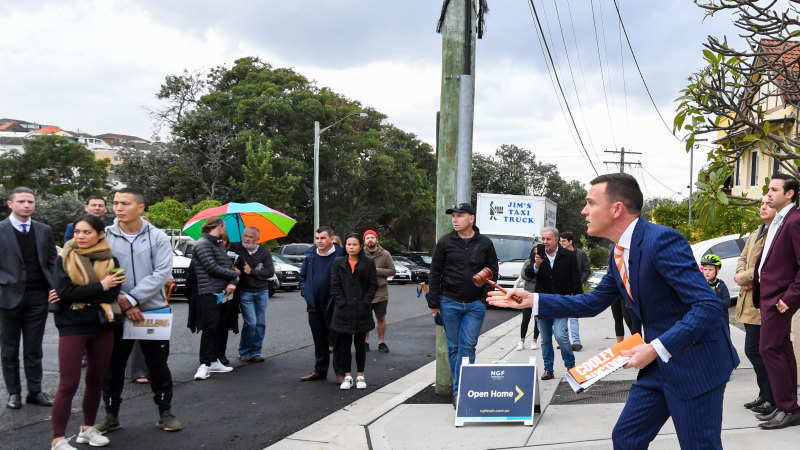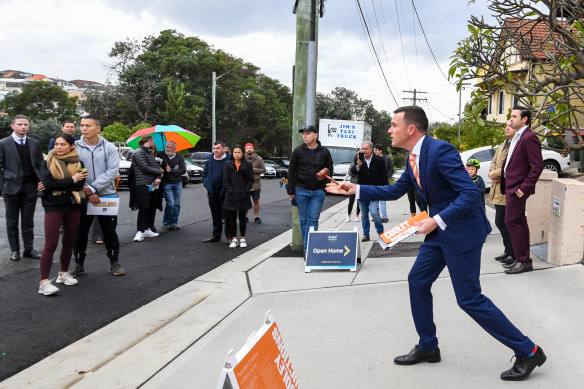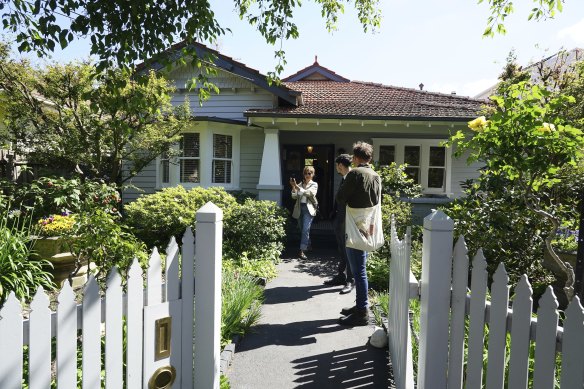Save articles for later
Add articles to your saved list and come back to them any time.
Property listings
A prominent economist has broken ranks to warn Sydney and Melbourne property prices are likely to fall next year after the cash rate hit a 12-year high.
Sydney and Melbourne house prices could fall by as much as 4 per cent in 2024, SQM Research managing director Louis Christopher forecast.
SQM Research warns Sydney and Melbourne property prices could fall.Credit: Peter Rae
His prediction for moderate declines comes after the cash rate reached 4.35 per cent in November, and contrasts with bank economists’ predictions of continued modest growth next year.
“We’ve reached the point where essentially this is going to create a little bit of a tipping point in the market,” Christopher said. “We’re not forecasting a crash. There is a clear housing shortage out there, to have a crash we need a surplus of housing.
“But can we have a moderate fall in housing prices based on a slowing economy and elevated interest rates? My word, we can.”
He expects price rises in Brisbane (4 per cent to 8 per cent) and Perth (5 per cent to 9 per cent) in contrast to the turnaround he tips for the two largest cities, saying Sydney house prices are likely to range between 4 per cent falls and a flat result in 2024, and Melbourne between 4 per cent falls and a 1 per cent rise.
“We’re expecting price falls for middle and outer ring freestanding houses [in Sydney] offset by some price gains at the top end of the Sydney market and offset by outperforming units,” Christopher said, noting a similar trend in Melbourne.
This base case scenario is based on a cash rate between 4.1 per cent to 5 per cent, population growth slowing to 460,000 or less and unemployment rate increasing to 4.5 to 5.5 per cent.
Christopher said those conditions will create a significant economic slowdown that might skate around a recession but will leave struggling homeowners forced to sell.
“For those who are looking to find a second job to cover those extra mortgage repayments, well, they might struggle to find that second job.”
Interest rates are weighing on home owners.Credit: Luis Enrique Ascui
He said while there will still be cashed-up buyers buying at higher-priced segments of the market, it will not be enough to sustain the price increases achieved this year.
Not everyone agrees. Barrenjoey senior economist Johnathan McMenamin said the chronic imbalance between buyer demand and limited number of homes on the market was preventing the market from reaching its tipping point.
“If we look at stock on the market nationally and even if you look at it in Sydney and Melbourne, it’s still quite suppressed,” McMenamin. “The new flow of listings which has been strong at the start of spring was easily absorbed by accumulated demand.”
But he also said the sheer transfer of intergenerational wealth would continue into 2024, allowing cashed-up buyers, who are less sensitive to rates and have low debt-to-income ratios, to hold up the property market.
“Housing has never been as unaffordable as it is now in terms of buying with a mortgage and the only way to explain the ongoing sales is the type of buyer has changed substantially from somebody who could buy a house more or less by himself to requiring a lot more help or a higher income,” he said.
“These buyers are also receiving assistance from the bank of mum and dad and there’s quite a large wave of intergenerational wealth being transferred, supporting the kids and supporting the families.”
Domain’s chief of research and economics Dr Nicola Powell expected price growth to continue, but at a slower rate, as an increase in homes for sale has reduced buyer competition for properties.
“We have got changing [market] dynamics now, we’ve got new listings rising, total listing supply building and clearance rates are more subdued than we were seeing earlier this year,” she said.
‘But can we have a moderate fall in housing prices based on a slowing economy and elevated interest rates? My word, we can.’
“[But] as it stands today I’m still not convinced we’ll see a dip in prices because the underlying undersupply is still going to be the one that trumps, [outweighing the impact of rising rates], particularly as we still have strong population growth.”
While there has been an increase in the number of homes for sale, the proportion of distressed listings has been declining, and was lower annually across all the capital cities on Domain data – and at a record low in Perth, and 18-month low in Sydney and Brisbane.
Powell said the price recovery in the housing market helped to create a buffer for borrowers, putting them in a better equity position.
“It creates that household wealth for mortgage holders and if they do have to sell it helps to insulate them from any deep negative equity,” Powell said.
She expected distressed and forced sales to remain limited, but warned there were still pockets of vulnerability, particularly in the mortgage belts regions of more expensive cities, and areas popular with first home buyers, where borrower typically had less equity in their home.
Most Viewed in Property
Source: Read Full Article


